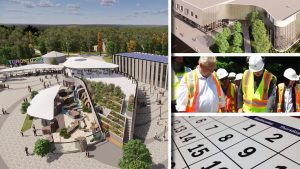With the requirement to cut travel and extend social distancing the construction industry is discovering remote collaboration technology.
In a sector not known for its early adopter stance on technology, the virus crisis has triggered some fast retooling to manage challenges such as site visits, progress monitoring and in office meetings as projects progress.
Luckily, there’s an abundance of remote meeting technology available, from Skype for Business, to Zoom and Microsoft’s team.
The demand has also created a boom for a Calgary start up which has a mobile platform to allow video and voice connection.
ICwhatUC’s co-founder and chief revenue officer Luke Krueger says the company launched in 2018 but and originally intended to target consumers and service companies.
“It’s really frustrating to call for service and then have to make an appointment two days later and be home between 12 and 6 p.m.,” he says.
The idea was to connect the customer with a service help desk which could then use the video and audio connection to diagnose an issue such as re-lighting a furnace pilot light and walk the end user through the process. Research told them the majority of calls could be and wouldn’t need a service call making customer service response more efficient.
”It’s the 80-20 rule, 80 per cent of calls don’t require a technician,” he says.
If a service call was required, he says, the technician would already know what the issue was and would have the necessary tools and parts. Research also suggested in many cases they don’t have the required tools or parts once they arrive and that further delays the repair.
As interest grew they launched a new version in January 2020 now garnering interest in the construction sector. It debuted just before COVID-19 and scored immediate hits with their first customers being Brookfield and Atco.
“It’s exploded since we started, going from zero to half a million in revenues in eight or nine months and with more deals on the table that should continue to grow,” Krueger says, nothing they just closed a round of financing in June and are ready to close another as demand continues to ramp because of COVID-19. We’ve also made some acquisitions.”
Part of the inspiration came from his father who is a general contractor in British Columbia’s lower mainland. He’s used it to get an engineer to sign off on glass balcony railing installations in Langley, saving a four-hour round trip in notorious traffic from downtown.
ICwhatUC is not an app, he says, it’s a web platform that automatically records every interaction in the cloud and works on all mobile devices.
”There’s no app to install,” he says. “You just set up an account and then send the customer a link and they are connected.”
It also provides augmented reality, allowing for someone to write on or highlight something in the image.
With COVID-19 things really ramped up, Krueger says.
“Epcor in the U.S. called us and said, just send us the contract we’re in,” he says.
On the other side of the collaborative technology coin there’s Microsoft Teams, which PCL Construction in Edmonton has fully embraced.
Steven Forester, a senior manager in PCL’s technology group, say they first started with Skype for Business for cross team collaboration but had been looking at Microsoft Team before COVID-19 hit.
They had rolled out a soft adoption to about 20 per cent of PCL employees but when COVID-19 hit it soon ramped to 100 per cent across the country.
”That was probably the first week,” he says. “It has so many features beyond telephony. We had planned to go 100 per cent anyway but we were growing it organically until then.”
He says the key to Microsoft Teams’ acceptance is a gentle learning curve and the benefits of real time collaboration with the group working on shared documents at the same time and updating them without have to pass them around one by one.
It also links to programs like Autodesk which is invaluable in construction and it’s been used on soft aspects of PCL culture such the fireside chats in which a group including everyone from the jobsites and offices gathers to discuss issues and other concepts that are often beyond engineering and construction and more about human interaction.
”The fireside chats are an important part of the PCL culture,” he says. “So, for those working at home or on site, we’ve been able to maintain that.”
Site reports are also plugged in with live video walk through enabling discussion that would have required a site visit, something that’s become more problematic with travel restrictions and social distancing requirements.
It’s also led to more frequent online collaboration because the meetings tend to be more efficient and faster, he says, while existing applications and platforms started to be used more often as well because they worked better as a suite of tools and solved many of the challenges posed by COVID-19 restrictions.
The shift to digital collaboration won’t change the pointy end of construction which will remain physically anchored to job sites, Forester says, but corporate cultures in the sector will continue to evolve.
“It’s the ability to reply on that technology which will change things,” he says. “People will realize that they don’t have to travel as much and rely on the technology. It will slowly change the idea of what is a standard work week and we’re more flexible. People will still get their work done and we’ve proven that. Working from home does work and people can be relied on.”








Recent Comments
comments for this post are closed